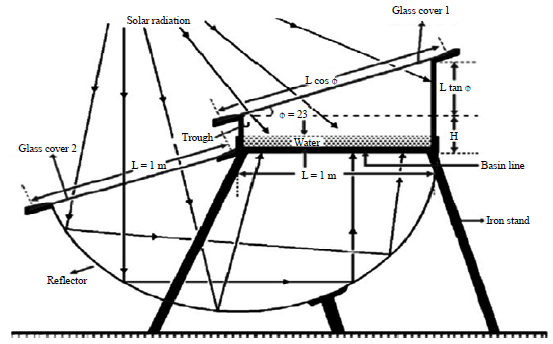
1. Design Solar Car
2. Rox & Ray Bulb Company

-
Created a theoretical company named ‘Rox & Ray bulb company’ which manufactures bulbs on a scale of 2,000,000 units per year. Rox & Ray manufacture two types of bulb: (1) LED bulb and (2) Incandescent Bulb.
-
Implemented Value stream mapping method to visually map the flow of raw materials and informations.
-
Calculated and assigned 2.06 $/ unit cost to a single unit of LED bulb and 0.4957 $/ unit cost to a single unit of Incandescent bulb by using Activity Based Costing system.
-
Implemented Variance analysis to spot the variance between budgeted and actual costs of LED bulb and incandescent bulb.
-
implemented break-even analysis to calculated the break-even point, which turned out to be 553,377 units of LED bulb and 380,536 units of incandescent bulb.
-
Discussed future plan for company to implement Lean six sigma, improve marketing strategy and improve supply chain model.
-
Design and developed solar car for state competition.
-
Prepared accurate and detailed mechanical and electrical drawing sets for system installation.
-
Created design improvement after first trial and make it more efficient,

3. Developed inverted absorber slope solar still and experiment with absorbed material and without absorbed material

-
Design technical specification of inverted absorber Single slope solar still using mathematical formulas, altitude and longitude.
-
Designed 2D and 3D illustrations of inverted absorber solar still using AutoCAD and PTC/Creo 3.0 and using technical specifications.
-
Created budget of project using activity based costing. Developed model of inverted absorber solar still accordance to AutoCAD and PTC/Creo 3.0 design and specification.
-
Experimental study without absorbed material on single slope solar still for three day and Experimental study with absorbed material on inverted absorber solar still for three day.
-
Compare three reading of inverted absorber solar still with absorbed material and without absorbed material.
4. Developed single slope solar still and experiment with absorbed material and without absorbed material

-
Design technical specification of Single slope solar still using mathematical formulas, altitude and longitude.
-
Designed 2D and 3D illustrations of single slope solar still using AutoCAD and PTC/Creo 3.0 and using technical specifications
-
Created budget of project using activity based costing. Developed model of single slope solar still accordance to AutoCAD and PTC/Creo 3.0 design and specification.
-
Experimental study without absorbed material on single slope solar still for three day and Experimental study with absorbed material on single slope solar still for three day.
-
Compare three reading of single slope solar still with absorbed material and without absorbed material.
5. Design of Experiments – Charging Time of iPhone Analysis

-
Devised a plan to research about the factors affecting charging time of iPhone by statistically analyzing the data records.
-
Using data from 64 trials of charging iPhone , we examined the factors affecting charging time of iPhone.
-
Implemented One-way ANOVA, Hypothesis testing and Interval estimation on the data sets and analyzed the data sets using Excel, SAS and Minitab.
-
Based on the value of R-square and P-value we researched on three most frequently occurring factors affecting the charging time of iPhone
-
Implemented 3 level DOE to examine most significant factor affecting on charging time of iPhone
6. SMED (Single-Minute Exchange of Dies) at R&D Atanova

Download 1
-
Based on Value stream Map, Change over time of one process is very Long (3 hour/week).
-
Created project planning and schedule for SMED.
-
Recorded whole preventive maintenance for 3 week and collected data and analyzed that data.
-
Created data seat to review video. (Please check Download 1)
-
Identified Internal and external element and created priority based on set up time and bottleneck element.
-
Converted internal element to external element to reduce downtime.
-
the remaining elements are reviewed with an eye towards streamlining and simplifying so they can be completed in less time. First priority should be given to internal elements to support the primary goal of shortening the changeover time.
-
Reduced Internal element changeover from 3 hour to 1/2 hour.